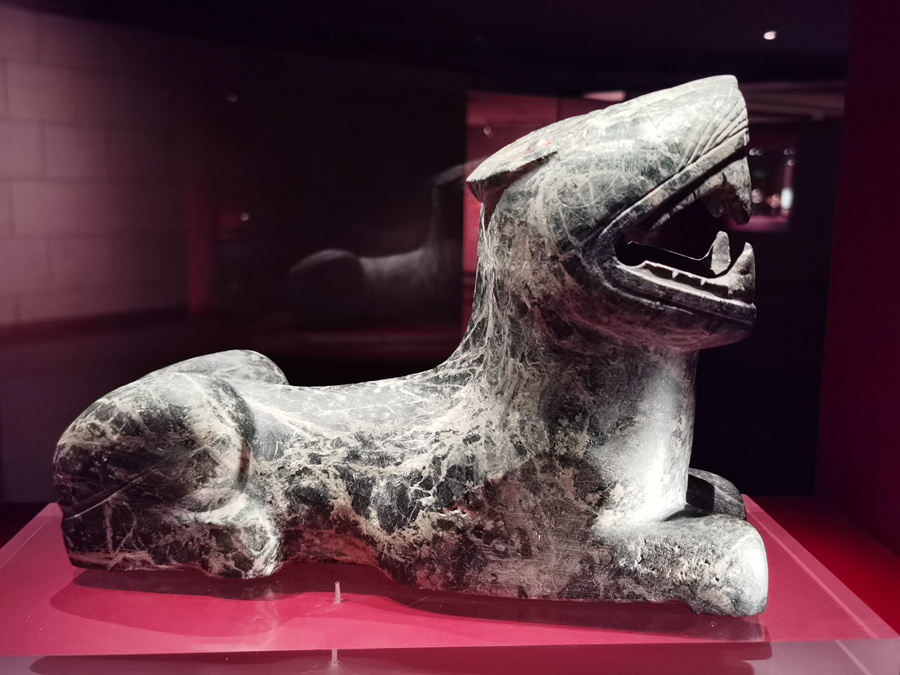

Archaeologists made a comprehensive analysis of the relics from the Sanxingdui and Jinsha ruins, including gold, bronze, jade, stone, ivory and pottery, and they found similarities in type, shape and processing techniques.
Unearthed at the Jinsha site, a 44-gram gold band, which is 19.9 centimeters in diameter when circled, 2.8 cm wide and 0.02 cm thick, is now on display in Exhibition Hall No 4 at the site's museum.
The band has four identical groups of patterns, each with a human head, an arrow, a bird and a fish; it shows a man shooting an arrow past one side of the bird and into the head of the fish.
As a counterpart to the band, a gold cane unearthed from the No 1 pit of the Sanxingdui Ruins also has symmetrical groups of patterns featuring a human head, arrow, bird and fish, in the same style.
Zhu says: "The gold cane is similar to a pharaoh's mace in ancient Egypt, and the gold band is like the crown. They both symbolize supreme power. The patterns on the gold band and cane signify the identity, or continuity, of the rulers in Sanxingdui and Jinsha. The Jinsha site might be a new capital for ancient Shu tribes after the decline of the kingdom in Sanxingdui."